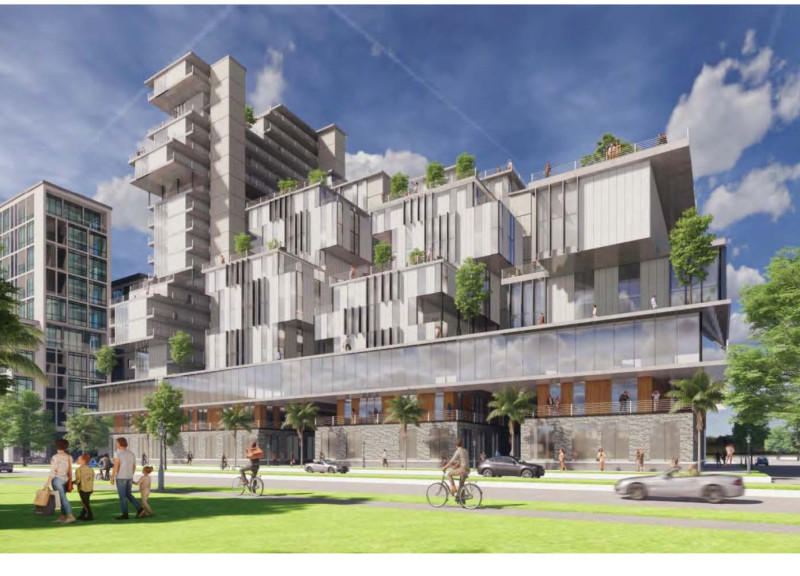5 key facts about this project
At its core, the project functions as a community-centric living space that prioritizes affordability without compromising on quality. The design integrates mixed-use facilities, blending residential units with communal spaces and retail areas that not only enhance the living experience but also foster social interaction among residents. This careful consideration of functionality allows for an enriching urban experience that combines residential living with community engagement.
The tower component is tailored to young professionals, featuring different configurations of studio and one-bedroom apartments that maximize efficiency while providing essential amenities. Adjacent to it, the mid-rise structure focuses on growing families, offering spacious two- and three-bedroom units designed to accommodate evolving household needs. Finally, the low-rise building caters to established families, providing varied layouts that promote comfortable living while maintaining affordability.
Important aspects of the design include a strong emphasis on natural light and ventilation, which are achieved through the extensive use of glass facades and well-placed balconies. These design elements not only foster a sense of openness but also create private outdoor spaces for residents to enjoy. The use of durable materials such as concrete, aluminum panels, and timber offers both aesthetic appeal and structural integrity. Timber, in particular, adds warmth to communal areas, creating inviting environments that encourage interaction among residents.
The unique design approaches exhibited in the project include the integration of green roofs and rainwater harvesting systems, emphasizing sustainability as a foundational principle. This not only contributes to the architectural expression but also supports the ecological health of the urban setting. Landscaping features further enhance the overall ambiance, creating inviting outdoor environments that promote well-being.
Another notable design element is the strategic layout of public spaces within the development. The inclusion of a public library and retail spaces at ground level connects residents to the surrounding community, making these facilities easily accessible. This integration fosters a sense of belonging and encourages active participation among the inhabitants of the development.
The project exemplifies a thoughtful response to the pressing need for affordable housing in Melbourne. By carefully considering the needs of various demographics and integrating essential community functions, the architectural design successfully promotes a balance between living, working, and socializing. The coherent relationship between the different residential typologies and communal spaces illustrates an understanding of urban dynamics, paving the way for a sustainable, inclusive community.
For those interested in exploring this project further, it is recommended to review the architectural plans, sections, and overall architectural designs presented. Engaging with these elements will provide deeper insights into the architectural ideas that have shaped this distinctive development, highlighting its thoughtful and intentional approach to urban living in today's context.























